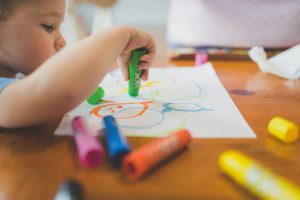Right now, I cannot help but think about how the future of libraries is reliant not only on their resources but their adaptability and responsiveness to their community’s needs. Considering all the new technologies that are being implemented, the library needs to make sure it keeps up. The integration of virtual assistants, smart homes, artificial intelligence more, the library must navigate through the world of technology to ensure that library services are for the people.
The integration of technology in libraries is revolutionizing new horizons in early literacy. At a young age, technology is being introduced whether or not we are aware of it. Kelly (2019) states that while Alexa, the Amazon voice assistant “may not be the richest relationship in a child’s life but it is a presence that can be long lasting”. This puts into perspective just how much technology is being integrated into the lives of the young ones. The library must position themselves to utilize the technology tools available to them to foster the literacy skills and develop them beyond just books.

Libraries can create new horizons in early literacy when technology is embraced. I think that transition from quiet libraries to places where play is encouraged has changed the expectation of libraries (Jacobson, 2021). Its turned into a more well-rounded interactive learning environment, providing opportunities for children, parents, guardians, and patrons to grow together (Celano et al., 2018). With the plethora of tools available to patrons, including digital resources, the library is opening the door for many different experiences to be had not just in their libraries, but can be extended into their homes.
Digital resources, such as interactive e-books, books that read in different languages, and platforms for more interactive learning are available at a young age. Some programs are being offered digitally to further the reach. It is through these experiences and resources that the library is able to expand its reach. Digital technology can be effective and complementary to the experiences that a child experiences (Pearson, 2024). It is clear that these systems are being used at home, and being used in conjunction with library services builds further engagement in more enriching ways. It allows them to use what is familiar to them, such as the a voice assistant tool to create connections that can supplement daily practices of using technology.
I think throughout all of this, it is important to remember that these opportunities with technology help build new horizons. However, at the same time, it is important to take it with a grain of salt. I still believe that overarching these new horizons and opportunities, lies the importance of teaching the proper and equipping patrons with the correct tools to help them grow. Looking into the future, all the new technology and gadgets are important to consider as well as embrace their intersection of both early literacy and technology. I think this is a testament to libraries and how they are able to handle change. Libraries that are able to prioritize adaptability can not only survive the needs of the community but thrive.
Technology is a crucial part of the journey towards new horizons for libraries. It has the power to make libraries consider their ability to adapt and respond to these changes. The integration of technology into library services should be towards not only change, but what it means to the community and its place as a community resource. These tools allow libraries to create an environment that is interactive and dynamic and catered towards fostering the skills for early literacy and engagement. Overall, seeing where technology fits into the lives of people and the library is an important balance to discover. It is important that while libraries are exploring their digital resources and technology for new integrations into the services, the main mission is still intact.
References
Celano, D. C., Neuman, S. B., & Knapczyk, J. J. (2018). Public libraries harness the power of play. NAEYC. https://www.naeyc.org/resources/pubs/yc/jul2018/public-libraries-harness-play
Jacobson, L. (2021, July 21). Library play spaces can help the transition back to in-person learning for youngest patrons. School Library Journal. https://www.slj.com/story/Library-play-spaces-can-help-the-transition-back-to-in-person-learning-for-youngest-patrons
Kelly, S. M. (2018, October 17). Growing up with Alexa: A child’s relationship with Amazon’s voice assistant. CNN. https://www.cnn.com/2018/10/16/tech/alexa-child-development/index.html
Pearson, N. (2024, April 15). Beyond abcs: Technology and early literacy. Edmonton Public Library. https://www.epl.ca/blogs/post/beyond-abcs-technology-and-early-literacy/#:~:text=Writing%20and%20Creativity%20Tools%3A%20Technology,engage%20in%20creative%20writing%20activities.
@jemielyn I appreciate your point about play and the later connected point about experiencing technology in various forms in the library and at home. Finding balance, as you point out, is key.